






Winter is here and it’s bursting with potential! As summer and autumn have slipped by us in a blur, it's time to welcome the crisp, refreshing days of winter. Don’t be fooled — this season is anything but sleepy! Veggie gardens are coming to life with rich, hearty harvests, while winter flowers and foliage bring bursts of colour to even the greyest of days! As we move through the season you might spot the first signs of spring as early bulbs begin to bloom. It’s also the perfect time to start dreaming and planning for the vibrant seasons ahead!
Gardening in winter is more than just a to-do list, it’s a chance to reconnect with nature, clear your mind, and create a space that reflects your growth and personality. Even with shorter days, a little time in the sun and soil can do wonders. Care for your garden as it cares for you!
We’re absolutely thrilled to share that Kings has been awarded the Canstar Blue Most Satisfied Customers Award in the Garden Centre category — for the second year in a row! At Kings, we’re proud to be plant people and we’re even prouder to know that you think we’re just as good with people as we are with plants. A huge thank you to everyone who voted for us. We are so pleased to have helped so many Kiwis grow well — and we can’t wait to keep growing with you!
In this issue of Scoop, we’ve packed in loads of inspiration and expert advice to keep your garden thriving all season long! You can expect our beloved regulars; Indoor Plants, Gardening Checklists, Plant Doctor and Gardeners Mail! Plus some extra deep dives into Growing from Seed, Roses, Hellebores, Pruning, Winter Colour and so much more!
At Kings, we’re here to help you grow well — every season and every step of the way. Whether you’re just starting out in the garden or a seasoned green thumb, we’re always just a message or visit away! Pop into one of our seven stores Auckland wide or reach out online — we’d love to help you with any plant questions or concerns you may have!
Let's grow well together this winter!
- The Kings team



Last year I planted a small but well formed Incredible Edibles fig tree on the south wall of my back garden.
The rest is history. Just over a year on I am picking succulent fat figs from my fan espaliered tree which loves the position and all my homemade compost.
A wonderful result from a great Kings purchase.
- Bev, Auckland


I bought these three beautiful floribunda standard “My Mum” roses last year from Silverdale Kings.
My mum had just passed away at the time and I wanted a plant (or three) in her honour.
The roses have been an absolute picture and I love them. They give our large rural garden a touch of colour and smell beautiful. The bees also love them.
Thanks Kings Plant Barn, you always have the best quality plants :)
- Lyn, Auckland

Got a tricky plant question? Ask instore or try our online Plant Doctor at plantdoctor.co.nz


Plant Doctor I need your help!
Hi Plant Doctor,
My viburnum shrub's leaves are going silvery and have black spotting on them, what is happening?
- Thank you, Jess N
Hi Jess,
The silvering is from Thrips! They suck out plant cell contents, usually attacking drought-stressed plants after dry summers.
Aquaticus Bugtrol is great for early intervention or on edibles. For heavy infestations on ornamentals, use Groventive Garden with EnSpray 99 Oil. Repeat 2–3 times, two weeks apart, to break their life cycle.
Some of my trees in the garden have broken out in these waxy little growths! Are you able to tell me what it is and how to treat it?
- Cheers, Paul S
Hi Paul,
From your photo you appear to have a bit of a Wax Scale infestation. If they are on ornamental plants, application of Groventive Garden will clear them up, but may need to be repeated a few times at 2-3 week intervals to ensure they are wiped out. If on edibles, Aquaticus Bugtrol applied a few times at 2 weekly intervals will eliminate them.

There’s something truly fascinating and rewarding about watching a plant grow, flower, and bear fruit — all from a tiny seed. Whether you’re a beginner or a seasoned gardener, the satisfaction of nurturing a thriving plant from seed is immensely fulfilling.
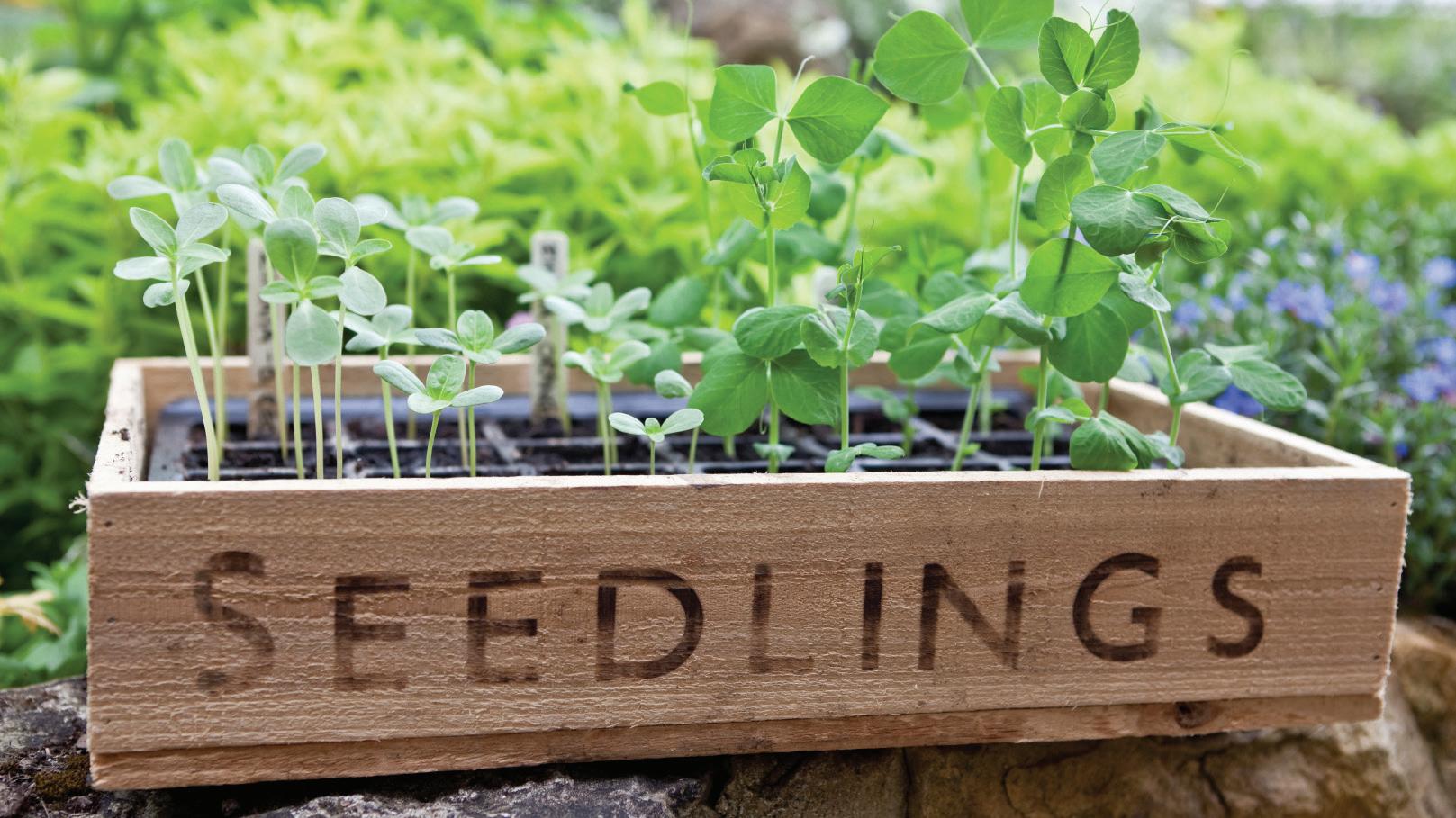
Fill your seed tray with organic seed-raising mix and moisten the soil before sowing. Check the seed packet for specific planting requirements — some seeds need to be sown into shallow trenches, while others are best lightly sprinkled on the surface. Cover with a thin layer of mix and gently press down to ensure good contact between the seed and the soil.
Keep the tray in a warm, welllit location, away from sudden drops in temperature at night. If sowing outdoors, choose a sunny, sheltered spot.
Gradually increase the amount of time your trays spend outdoors, depending on the season. This process, known as ‘hardening off’, allows young plants to slowly adapt to outdoor conditions.
These steps will help your seedlings transition successfully into garden beds or pots — just be sure to protect them from any early spring frosts!
Prepare the soil by forking in Kings Organic Compost, then rake it to form a fine seedbed. Sow seeds according to the packet instructions and lightly rake over with the remaining soil. Water gently.
Some seeds, like beans and peas, are best sown in rows to support vertical growth on a trellis. Root crops such as carrots, beetroot, and parsnips should also be sown in lines, while corn benefits from being planted in blocks to improve wind pollination later in the season.
Watering
Water regularly and never allow the soil to dry out. If growing in trays, use a hand sprayer to moisten the mix and gently mist the emerging seedlings. In the garden, a hose on a gentle sprinkle setting works well. Keep the water pressure low and angle the nozzle upwards to avoid disturbing the soil. Heavy watering can displace germinating seeds and damage young roots.
During spring and early summer, most seeds require daily watering, ideally in the morning, to prevent moisture loss from the heat of the sun.
Feeding
Once your seedlings have developed at least two pairs of ‘true leaves’, you can begin
feeding them with Kings Liquid General Garden Food or Organic Garden Booster. Use fertiliser at half strength for young plants to avoid damaging them.
Transplanting
When transplanting, take care not to damage the developing root system. Always lift seedlings by their leaves, not the stem, which can easily snap.
Gently tease apart the seedlings and plant them individually into prepared holes, slightly deeper than they were previously growing. Firm the soil gently around them. Water in well and continue feeding with a liquid fertiliser every two to three weeks.

Grow well with
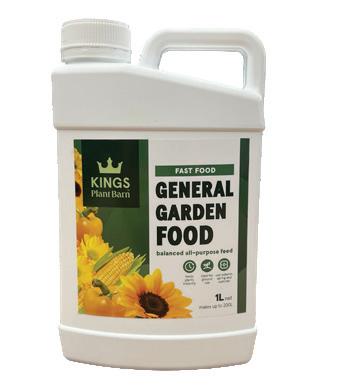
Kings Liquid General Garden Food
Kings Liquid General Garden Food is a complete feed which provides the nutrients your plants need to produce healthy growth.

Tui Organic Seed Raising Mix
The perfect organic seed raising mix, specially formulated for natural, trouble-free seed raising and propagation of cuttings.
Kings Top Tip
Some of our top seeds for sowing in winter include lettuce, onions, peas, broccoli, and beetroot. Not all seeds can be sown year-round, so always check the back of the seed packet to ensure you're sowing at the right time for your region and season.
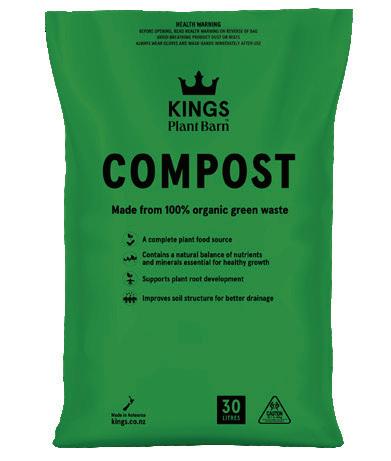
Kings Compost
Mix into your original garden soil for organic nutrients, as well as helping to improve drainage.
The shorter days and winter chills may tempt many gardeners to hang up their gloves and let their garden rest. But winter is far from a dormant season — it’s the perfect time to celebrate the resilient beauty of plants that thrive in the cold! Here are some of our favourites to brighten up the season:

Magnolia
With their fragrant, show-stopping blooms, magnolias are true winter gems. These trees make a bold statement in late winter and early spring, bursting into flower just when the garden needs a pick-me-up. Available in a range of sizes and varieties, there’s a magnolia to suit any garden!

Leucadendron
Tall, striking, and wonderfully low-maintenance, Leucadendrons are a winter must-have. These drought-tolerant beauties thrive with minimal attention. While they don’t produce traditional flowers, their colourful bracts will add vibrant interest to your winter garden!

Grevillea
A magnet for bees and nectarloving birds, Grevilleas are bursting with character. Their bright, spidery flowers bring a splash of colour through the cooler months. These hardy blooms are droughttolerant, low-care, and perfect for those trickier corners of the garden that don’t see much upkeep.

Heuchera
Also known as ‘coral bells’, Heucheras are evergreen perennials that offer an eyecatching range of foliage colours from lime green to deep burgundy. Their delicate, bell-shaped flowers add charm through the seasons. Ideal for part-shade spots, they’re easy-going plants that ask for very little in return.
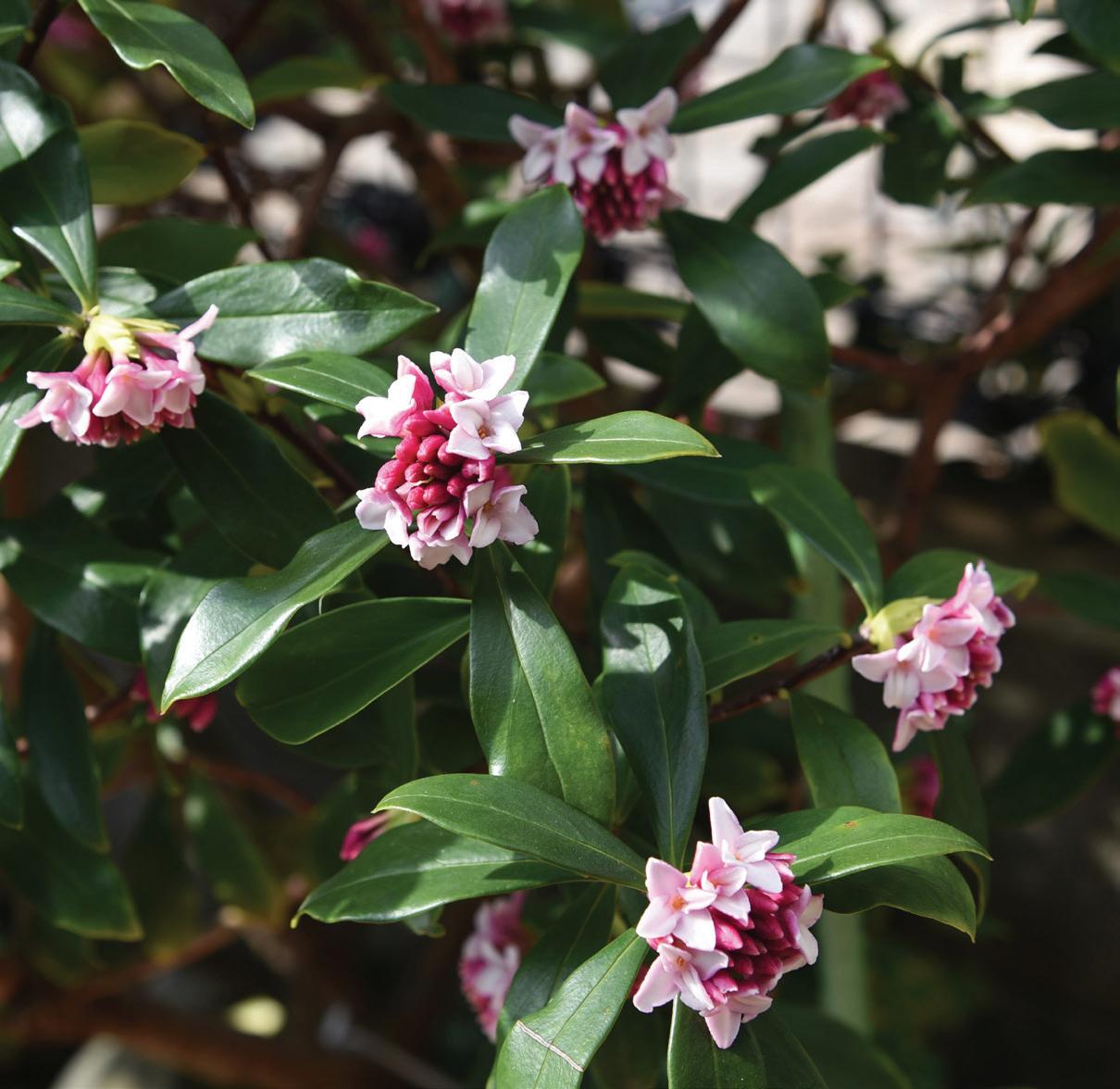
Few plants rival Daphne for fragrance. Their intoxicating scent and delicate blooms that typically come in white with a pink blush make them a cherished winter bloomer. Just one shrub near a pathway or entryway is enough to perfume the whole area!

Brown Boronia
Brown Boronias may be small, but they pack a fragrant punch! These evergreen shrubs feature unique yellow and brown bell-shaped flowers that bloom from late winter into spring. Their sweet, citrusy scent is utterly delightful — plant them where you can enjoy their perfume up close.
Follow us on Facebook and Instagram to stay up to date with new releases and what we’re loving.
KingsPlantBarnNZ

KingsPlantBarn

At Kings, we lovingly grow a selection of plants in our own local nursery. We hand-pick the best varieties for success in Auckland gardens, all backed with our sure to grow guarantee to help you grow well.
The team at Kings are plant people — passionate and enthusiastic about caring for plants. Get to know a few of our team, and the story of how their love for plants came about. With their expertise and love for plants, they’re here to help you grow well.

Maria Takapuna Garden Centre Assistant
With a background in Horticulture, my love for plants began during my childhood in the Philippines, where a commercial vegetable garden a stones throw away from our home inspired my passion. I witnessed the growing of different vegetables to maturity which deepened my appreciation for growing things.
Plants have always been close to my heart, and when my husband began working at Kings Nursery, it felt natural for me to follow.
I’ve been with Kings for 18 years now, and I truly love it here — the environment, the people, and of course, the plants. Working here allows me to connect with customers, many of whom become lifelong friends through our shared love of gardening. I’m especially fond of grooming and caring for plants like petunias in summer and cyclamen in winter, which were new to me but have become favourites. Watching plants bloom — and knowing I helped — is incredibly satisfying and keeps me inspired every day.
Stonefields Store Manager
Originally from Manchester in the north of England, I moved to New Zealand in 2013 after years of travelling and working around the world — including organic farming in Toronto, living in Barcelona, and spending time in California’s national parks. These experiences really opened my eyes to the different ways people connect with plants and nature. One of the most beautiful flower shows I have ever visited is the Girona Flower Festival in Northern Spain. The mix of the historic old town and the stunning floral displays is unforgettable.
I’ve now been with Kings Plant Barn for 11 years, working across six stores. It’s given me a great perspective on Auckland’s gardening scene and allowed me to meet so many amazing people along the way. I love being outdoors, spending time in the garden, and encouraging my kids to grow things too — we’ve even made it a tradition to grow sunflowers from seed each year!
For me, gardening is about slowing down, reconnecting, and creating something meaningful. Helping customers find the right plants for their spaces, and seeing them succeed, is always a highlight.

Head instore today and meet our team of expert staff and knowledgeable Plant Doctors. Whether you’re a beginner or a gardening pro, our team are here to help you grow well.
It’s easy for the garden to shine in spring, summer and autumn — but winter doesn’t have to be grey and gloomy! With the right plants and a few clever tips, your outdoor space can be just as beautiful during the colder months.

Adding winter colour is one of the easiest ways to lift your spirits on those chilly days. Whether you're after bold statement shrubs, soft floral accents or vibrant pot plants, there’s something to suit every garden — big or small, sunny or shaded.
Layer Up
Mix plant heights and textures to create visual interest.
Play With Pots
Use containers to move colour where it's needed most — by the front door, on the deck, or along a path.
Fragrance Counts Too
Look for plants like Boronia to bring scent as well as colour to your space.
Think Structure
Evergreens and shrubs add year-round form that holds the garden together in winter. With a little planning, your garden can stay alive with colour, texture, and joy — even in the depths of winter. So pop on your gumboots, grab your trowel, and plant a little happiness this season!

Rhododendron
These evergreen beauties deliver vibrant blooms and make a striking feature in any winter garden. With a wide range of colours and sizes, Rhododendrons are perfect for creating dramatic, eye-catching displays.

Cyclamen
One of the easiest winter bloomers to grow! Cyclamen thrive in cooler temperatures and are perfect for pots or shaded garden beds. Their red, pink, purple and white flowers add an instant pop of colour!
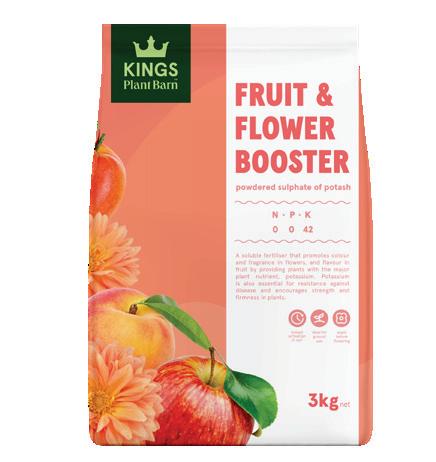
Kings Fruit & Flower Booster
Sulphate of Potash gives your plants the boost of potassium they need to produce new flowers with stronger colour and fragrance.

For something a little exotic, Proteas offer bold, architectural flowers in standout colours. They’re also surprisingly lowmaintenance — an ideal focal point for any winter landscape.
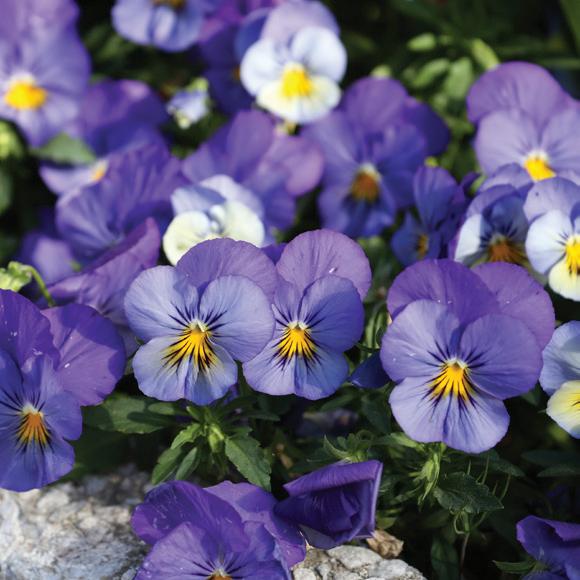
Loved for their bright, happy faces and long flowering season, pansies are a winter staple. Great in containers, garden beds or hanging baskets. Tip: deadhead regularly to keep them blooming.
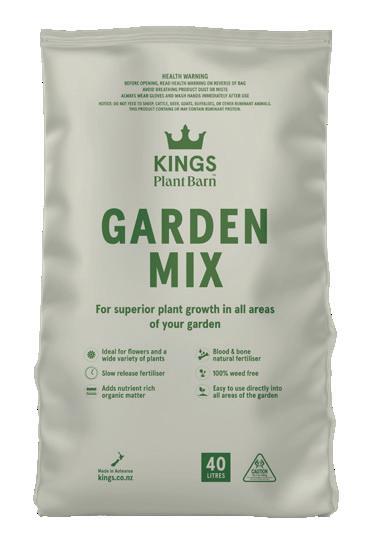
Garden Mix
Ideal for flowers and a wide variety of plants. 100% weed-free, and includes blood & bone and slow-release fertiliser for healthy growth.

Azaleas
These low-growing shrubs burst into colourful bloom from late winter through to early summer. Perfect for Japanese-style gardens or shady spots that need a little extra cheer.
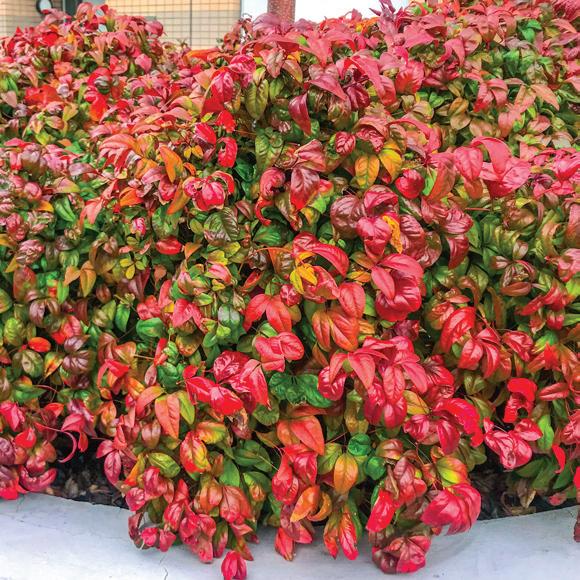
Nandina
This hardy evergreen shrub changes with the seasons literally. Many varieties, like ‘Fire Power’, take on brilliant red hues as the temperature drops. Nandina is tough, versatile, and works beautifully as a backdrop or border plant.
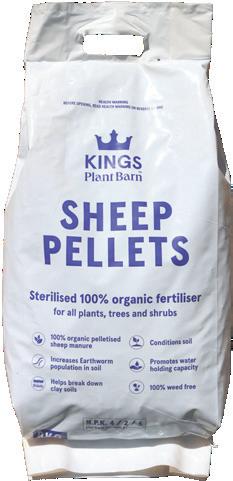
Kings Sheep Pellets
A great organic fertiliser for all of your plants, trees and shrubs. Apply a handful into your dug hole, or sprinkle around drip-lines.

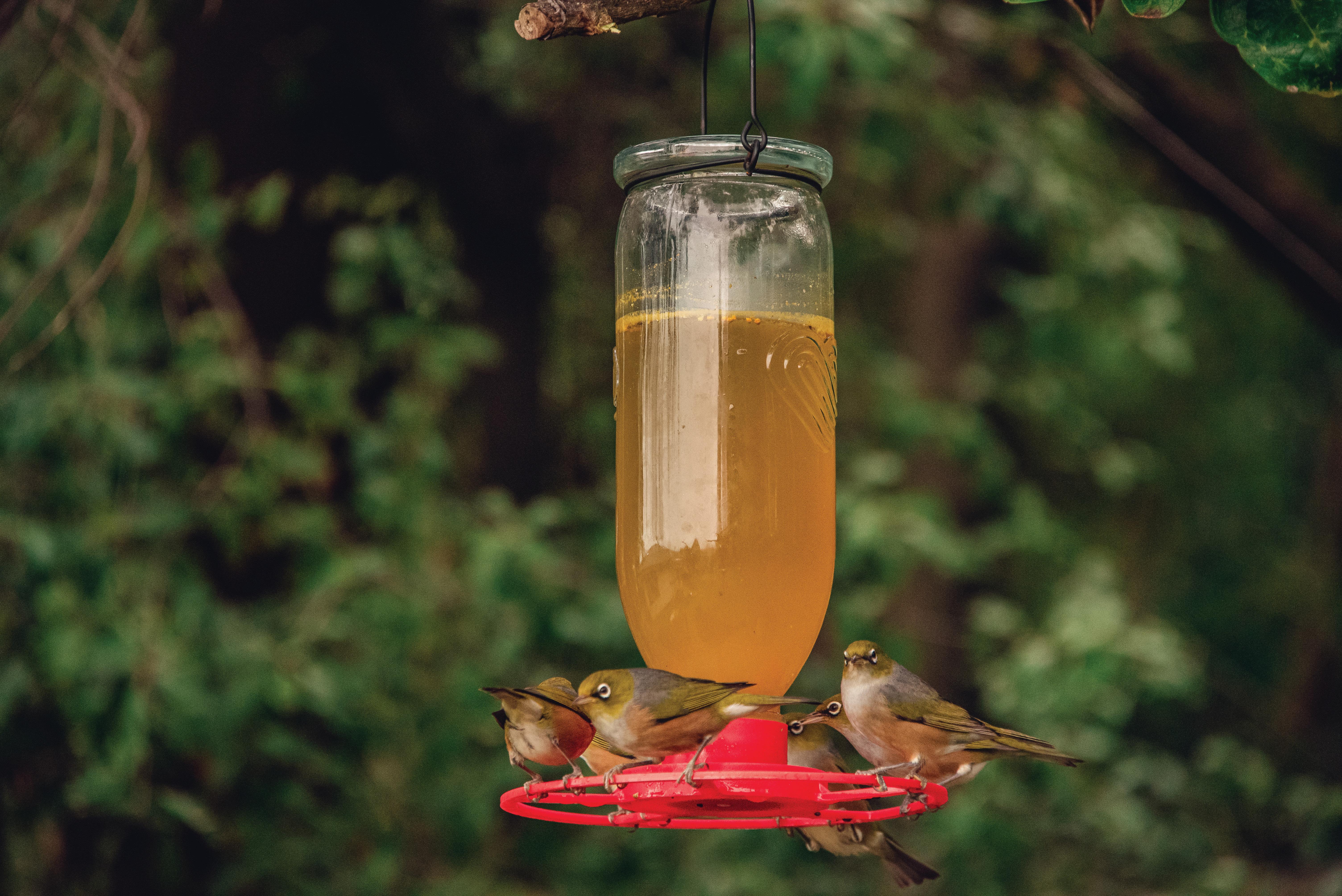
See the range at your local Kings Plant Barn
Growing roses is easier than you might think! With a little TLC, your garden will be bursting with beautiful blooms before you know it. Whether you're planting your first rose or brushing up on the basics, this beginner-friendly guide will walk you through everything you need to know to get your roses off to a blooming good start!
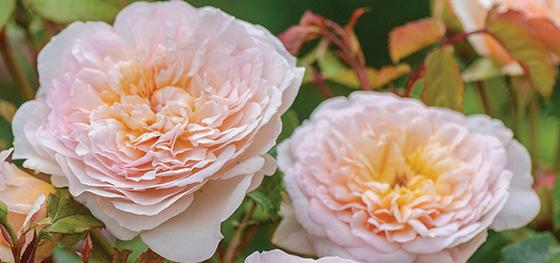
Finding the Right Spot!
Great roses start with a great location. Roses thrive in full sun and well-draining soil that’s rich in organic matter. If you're gardening in a humid area like Auckland, choose a spot with good airflow to help reduce the risk of fungal diseases. Avoid planting roses too close to large trees, as they may compete for nutrients and sunlight.
Into the Ground We Go! Roses prefer being planted straight into the garden rather than in pots — this gives their roots plenty of room to stretch out and grow strong. Planting directly into the ground also encourages deeper root systems, which can make roses more resilient in dry conditions.
Dig the Hole
Start by digging a hole that’s twice the size of your rose’s pot. For heavier clay soils, go a little larger to increase drainage.
Prep Your Soil
Mix your original soil with Kings Compost and Kings Sheep Pellets, or use Kings Garden Mix. If your soil is heavy clay, break up the sides of your planting hole as you backfill, and mix in a handful of Clay Breaker Gypsum to help improve drainage.
Plant Your Rose
Position your rose in the hole, then backfill with your soil mix and some of the existing soil. Press the soil down gently but firmly. If your garden has poor drainage, plant the rose on a slight mound to keep the roots happy and dry.
Water & Feed
Give your newly planted rose a deep drink of water. Follow up with Kings Slow-Release Rose Food to set it up for success. Finally, mulch around the base (keeping it a few centimetres from the stem) to lock in moisture and keep weeds away.
Pruning can seem daunting, but it’s actually quite simple — and so worth it. A good winter prune encourages lush, healthy growth and more flowers when spring arrives.
When Should You Prune?
Aim to prune when roses are dormant — typically late June to early July.
What You’ll Need:
· Sharp secateurs
· Sturdy gloves
· A pruning saw (for larger branches)
· Yates Lime Sulfur (to spray after pruning)
· Pruning paste (for larger cuts)
Bush and Standard Roses

Shape the plant into an open vase by removing any dead, diseased or damaged wood, thin twigs, and crossing branches. Then, cut back the remaining stems by at least one-third, trimming to an outward-facing bud.
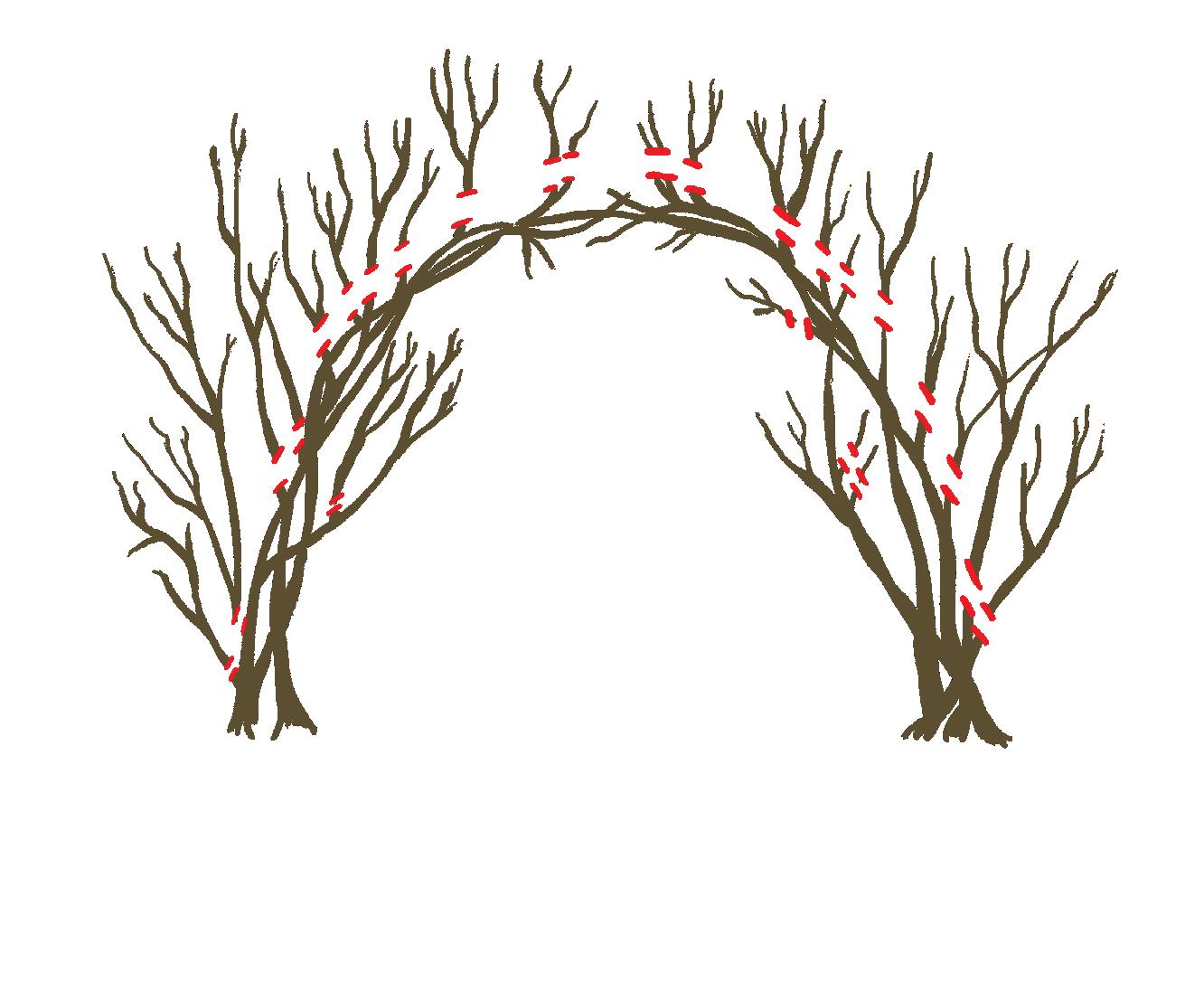
Climbing Roses
Clear out thin or tangled twigs, open up the centre for better airflow, and reduce the size of the plant by about a third.

A clean, sharp cut when pruning is extremely beneficial to the health and well-being of your

Ideal for flowers and a wide variety of plants. High quality planting mix with a blend of nutrients for sustained health.

Use our fantastic fertiliser in the spring and summer season to help promote lush growth and stunning blooms.
Now that you’ve got the basics down, it’s time for the most exciting part — picking your favourites! Whether you're after timeless elegance or a pop of personality, we’ve rounded up some of our most popular rose varieties to inspire your garden dreams.

Iceberg
A true classic and a New Zealand bestseller! Iceberg roses are beloved for their clusters of crisp white blooms that flower continuously. They’re strong growers, disease-resistant, and make a stunning statement as standard roses. Effortless and elegant — what’s not to love?
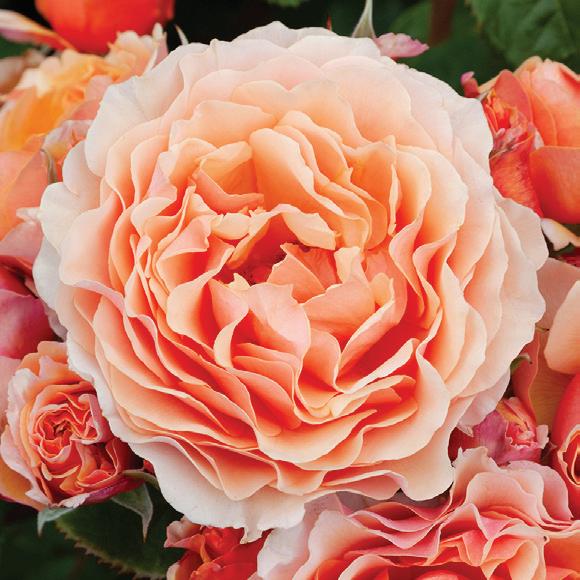
A Gardener's Dream
Just like the name suggests, this one’s a joy to grow! With cheerful apricot clusters and a knack for repeat flowering, A Gardener’s Dream is a fabulous floribunda rose for beginners and seasoned rose lovers alike. Lowmaintenance, high reward!

Romantic and refined, Emily Brontë is a rose with real charm. Its unusually flat, intricately packed petals form soft peach blooms that smell absolutely divine. With a strong, old-world fragrance and eye-catching form, this rose brings literary beauty to any border.

Aroha
A breathtaking new release to New Zealand, Aroha delights with perfectly formed cherry-red blooms set against rich, deep green glossy foliage. Ideal for cutting, with exquisite buds that bloom gracefully. Aroha flowers repeatedly throughout the season, bringing enduring beauty to any garden.
Learn all you need to know about looking after roses from planting, pruning, and general care. Everyone welcome.
Store Date and Time
Botany Sunday, 6th July 11.30am
Remuera Sunday, 6th July 2pm
Stonefields Sunday 13th July 2pm
Henderson Sunday 20th July 11.30am
St Lukes Sunday 20th July 2pm
Silverdale Sunday 27th July 11.30am
Takapuna Sunday 27th July 2pm
Hellebores are the perfect pick-me-up for those chilly, grey garden days. Their vibrant blooms burst into colour just when we need it most. Not only are they stunning, but these perennial beauties also provide much-needed food for bees and insects during winter. Even better? They’ll return year after year to brighten your space! Check out some of our top tips and favourites.

Position
Hellebores prefer partial shade and thrive in dappled light — think under trees, along hedgerows, or on the south side of fences and buildings. They’re brilliant for brightening those tricky, shaded garden spaces.
Planting
When planting, ensure the crown of the plant is just below the soil surface — burying it too deeply can stop those gorgeous blooms from showing up. Tuck them in gently and firm the soil around the base.
Hellebores are most active in autumn and spring, so water well during these times. In summer, they’ll naturally die back and go dormant, so less watering is needed.
These beauties love to spread, so don’t be surprised to see baby Hellebores popping up! Thin out any unwanted seedlings to keep your garden looking tidy.
Whether you’re new to gardening or a seasoned green thumb,
Hellebores are a brilliant way to add life, colour, and charm to your winter garden. Low-maintenance, pollinator-friendly, and irresistibly pretty — what more could you ask for?
Hellebores naturally hold their blooms with a gentle nod toward the ground. To enjoy their full charm, plant them on a slope, raised bed, or in pots at eye level — you’ll get the best view of their intricate flowers that way!

White Magic
A New Zealand-bred gem, White Magic dazzles with its large, pure white flowers and lime-green eye. As the blooms mature, they gently blush into a soft pink, adding a touch of romance to the winter garden.

Betty Ranicar
Originating in Tasmania, this unique hybrid features ruffled, oversized blooms unlike any other Hellebore. Its elegant, sculptural flowers make a standout addition to your winter display — definitely one for the collectors!
Helleborus niger ‘White Magic’
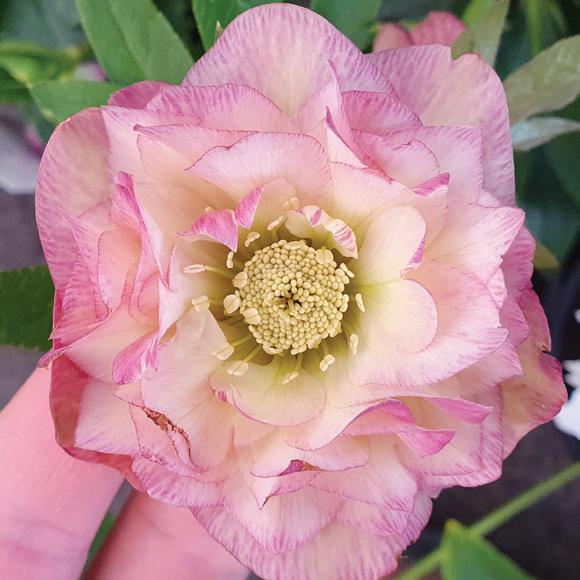
Clifton Double Hybrids
A dreamy, vintage-style Hellebore with double-layered petals coming in a variety of hues and tones. These rounded blooms contrast gorgeously against deep, dark foliage, creating a look that’s both antique and modern.

Vibey Velvet
With rich red-purple blooms and lush, marbled foliage, Vibey Velvet brings bold colour and texture to your garden beds. A showstopping choice for gardeners who love a dramatic winter display.

Ice 'n' Roses® Range
Bold and beautiful, this variety features rich coloured petals with a golden crown of stamens. Striking and sophisticated, Ice ‘n’ Roses® Red is the ideal statement plant to bring drama and depth to a winter bed.

Anemone
Delicate and whimsical, this semi-double Hellebore is named for its frilly central tuft of stamens — resembling a sea anemone or a ballerina’s tutu. Blooming in shades of soft pink to mauve, it’s a graceful and unusual addition to any shaded spot!
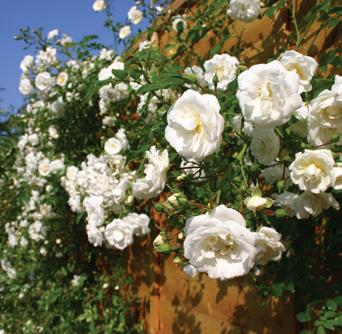


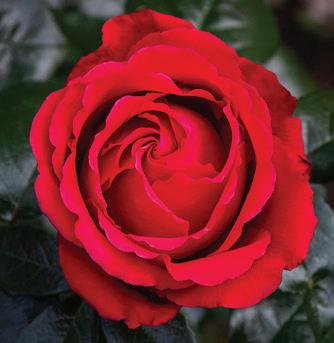
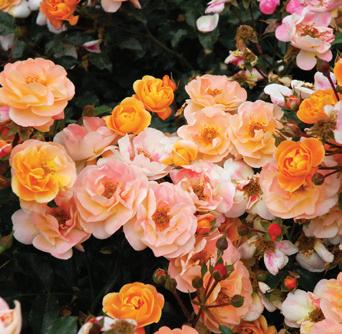



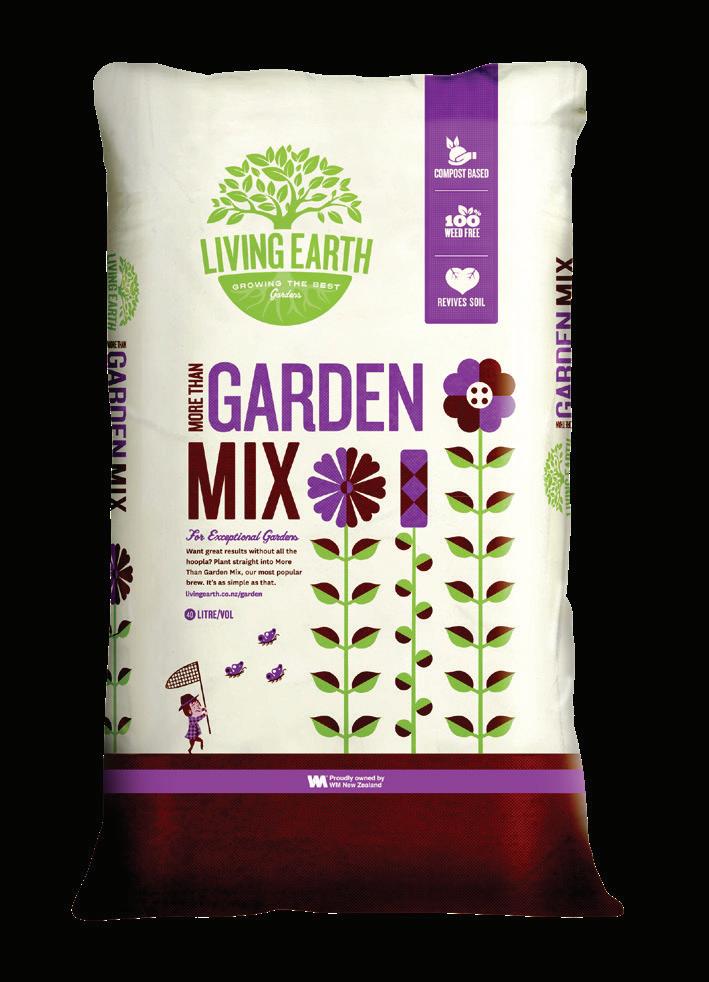
Shield your garden from Winter’s chill with More than Mulch Mix – a protective blanket that not only insulates roots from the cold but also conditions the soil beneath.
Shield your garden from Winter’s chill with More than Mulch Mix – a protective blanket that not only insulates roots from the cold but also conditions the soil beneath.
Shield your garden from Winter’s chill with More than Mulch Mix – a protective blanket that not only insulates roots from the cold but also conditions the soil beneath.
Unlike ordinary mulch, our premium blend enriches your soil while maintaining an an aesthetically appealing finish throughout Winter.
Unlike ordinary mulch, our premium blend enriches your soil while maintaining an an aesthetically appealing finish throughout Winter.
Unlike ordinary mulch, our premium blend enriches your soil while maintaining an an aesthetically appealing finish throughout Winter.



Winter is the perfect time to prune many garden favourites. With your plants dormant, it's easier to see their shape — and a good winter prune sets them up for a burst of healthy growth come spring! Done right, winter pruning improves air circulation, encourages flowering, and keeps pests and disease in check.

If you're feeling a bit unsure about pruning your plants for the first time, pop into your nearest Kings — our friendly staff are always happy to offer tips and advice.
• Use Clean, Sharp Tools
Dirty blades can easily spread disease between plants, and dull ones can crush or tear stems, leading to slow healing and potential infections.
• Pick a Dry Day
Pruning in dry weather helps prevent the spread of fungal infections and makes it easier to see the plant’s natural structure clearly.
• Understand Your Plant
Know whether your plant blooms on new or old wood — pruning at the wrong time of year could reduce flowering and fruit production for the season.
• Start With the 3 D's
Always begin by removing anything dead, damaged, or diseased, as these parts can drain energy from the plant and harbor pests.

• Thin It Out
Open up crowded areas to improve air circulation and light penetration — this helps reduce mildew, enhances growth, and supports a balanced shape.
Getting Started
Winter pruning isn’t just about shaping your plants — it plays a vital role in their long-term health and performance. With most deciduous plants dormant, pruning causes less stress and reduces the risk of sap loss or infection. The lack of foliage also gives you a clearer view of the plant’s framework, allowing more precise cuts and better decisions about what to remove.
By tackling problem branches now, you’re setting the stage for vigorous, balanced growth when the warmer weather returns. Pruning in winter may seem


daunting, but once you get the hang of it, it becomes one of the most rewarding gardening tasks of the year.
Your plants will thank you with a flurry of blooms and a stronger, healthier structure.
So pop on your gardening gloves, sharpen those secateurs, and give your plants the winter TLC they deserve!



Whether you’re dreaming of a backyard orchard or simply want to harvest fresh fruit from your balcony, deciduous fruit trees are a brilliant way to bring delicious flavour and seasonal beauty into your garden. From compact dwarf varieties to classic favourites, there’s a tree for every space — big or small!

Best planted in winter, deciduous fruit trees arrive in-store from early June to July. Get them in the ground now to set them up for strong spring growth and tasty harvests throughout the year.
No matter your space, there’s a fruit tree for you. Whether you’re planting your first dwarf apple in a container or planning an orchard out the back, now is the perfect time to get started. Your future self — and your taste buds — will thank you!
Perfect for small spaces and easy maintenance, dwarf deciduous fruit trees offer all the flavour and seasonal beauty of their full-sized counterparts — just in a more compact form. Growing to around 1.5 to 2 metres tall, they’re ideal for pots on balconies, small courtyards, or tight garden beds where space is at a premium. Their smaller size makes them easier to prune, net, and harvest, meaning less work and more reward.
Despite their petite stature, these trees can be incredibly productive, offering generous yields of apples, peaches, nectarines, apricots, and more. With careful selection and the right care, you can even grow multiple varieties in a small area or stagger your harvests across the seasons. Whether you're short on space or simply want to keep things low-maintenance, dwarf fruit trees are a smart, versatile choice for modern gardens.
With so many different varieties to choose from, there’s a deciduous fruit tree to suit every preference. Each variety has its own strengths, flavours, and culinary purposes, so here are a few of our favourites that will be hitting our stores this winter.
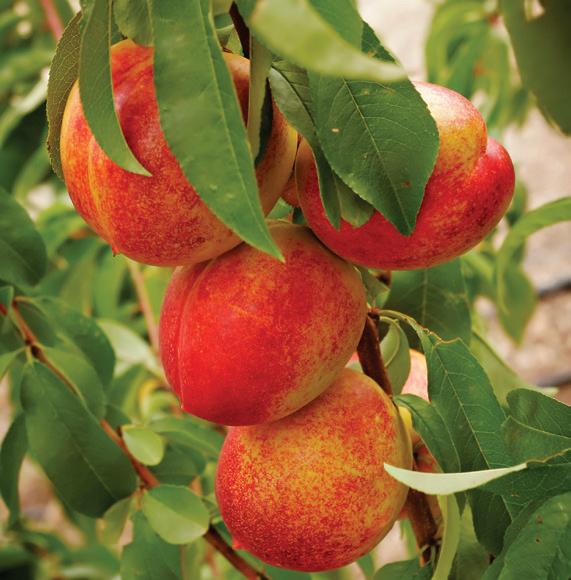
Snow Queen
Known for its super sweet flavour this nectarine is a firm favourite for a reason.
Flavourzee (Dwarf)
Ideal for small gardens or large containers with its easy-tomaintain growth habit, while still producing super tasty fruit!

Royal Gala
A gardeners' favourite! These apples are crisp, sweet, and perfect fresh off the branch.
Autento (Dwarf)
Perfect for small sunny spaces, this dwarf apple tree has a charming ‘Christmas Tree’ shape.

Taylors Gold
A late-season variety with rich, russet-gold skin and exceptional flavour!
Garden Belle® (Dwarf)
New Zealand’s first true dwarf pear! This variety is perfect for petite gardens and great for snacking straight from the tree.

Black Doris
With its deep purple flesh and bold flavour, Black Doris is a top pick for cooking.
Santa Rosa
This self-fertile variety is packed with flavour and ideal for small gardens.

Golden Queen
A true Kiwi classic! With firm, deep orange flesh, this peach tends to ripens late in the season.
Pixzee (Dwarf)
Perfect for pots, balconies, and small sunny spaces. It’s a lowmaintenance choice with a naturally compact growth habit!
Just because it’s cold and grey outside doesn’t mean your home can’t be full of lush greenery! Bring nature indoors this winter by curating a vibrant indoor plant collection. We’ve rounded up our favourite houseplants, styling ideas, and winter care tips to keep your leafy friends thriving.

Peace Lilies
These classic beauties are as easy to care for as they are elegant. Peace lilies not only brighten up a room but also help purify the air — removing toxins and releasing oxygen. A perfect blend of beauty and wellness!
Sansevieria (Snake Plant)
If you’ve ever declared yourself a "black thumb" — this one’s for you. The snake plant is virtually indestructible! It tolerates low light, irregular watering, and general neglect with grace. Plus, its striking upright leaves bring a modern flair to any room.
ZZ Plant
Nicknamed the “eternity plant” for good reason, ZZs are hardy, slowgrowing, and incredibly tolerant of low light and dry conditions. Their glossy leaves add a touch of tropical luxury — even in the darkest corners of your home.
Dracaena
With graceful foliage and a huge variety of styles, there’s a Dracaena for every plant lover. Low maintenance and happy in indirect light, these plants are ideal for adding texture and vertical interest to your houseplant collection.
African Violet
Compact and easy to care for, African Violets bring vibrant color indoors with their velvety leaves and cheerful blooms. Perfect for bright windowsills, these charming houseplants flower year-round with just a little love and light.
Keeping your indoor plants warm in winter is essential, especially since they're mostly tropical or sub-tropical. It is important to maintain a room temperature of at least 18°C to prevent cold damage and dieback, and avoid placing them near draughts, heaters, or heat pumps.

With winter comes shorter days and lower light levels. Your indoor plants may need a new home for the winter months with brighter indirect light. Clean your windows to increase the natural light in your indoor space, and wipe your plants' leaves with a damp cloth to clean off dust and help with light absorption.
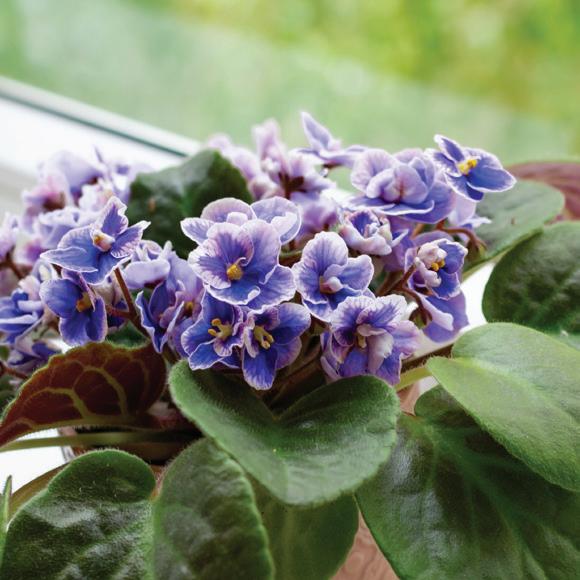
Whether your vibe is minimalist and modern or wild and boho, indoor plants can completely transform your space. With a few simple tips and a little extra love this winter, your indoor garden will stay lush, lively, and full of life — even when the world outside is fast asleep.
Group Them Together
Create a planty vignette by clustering a mix of plants in various sizes, shapes, and pots. A collection with height variation, contrasting foliage, and textured containers brings real personality to a space. Try pairing greenery with timber or vibrant textiles for an extra cosy feel.
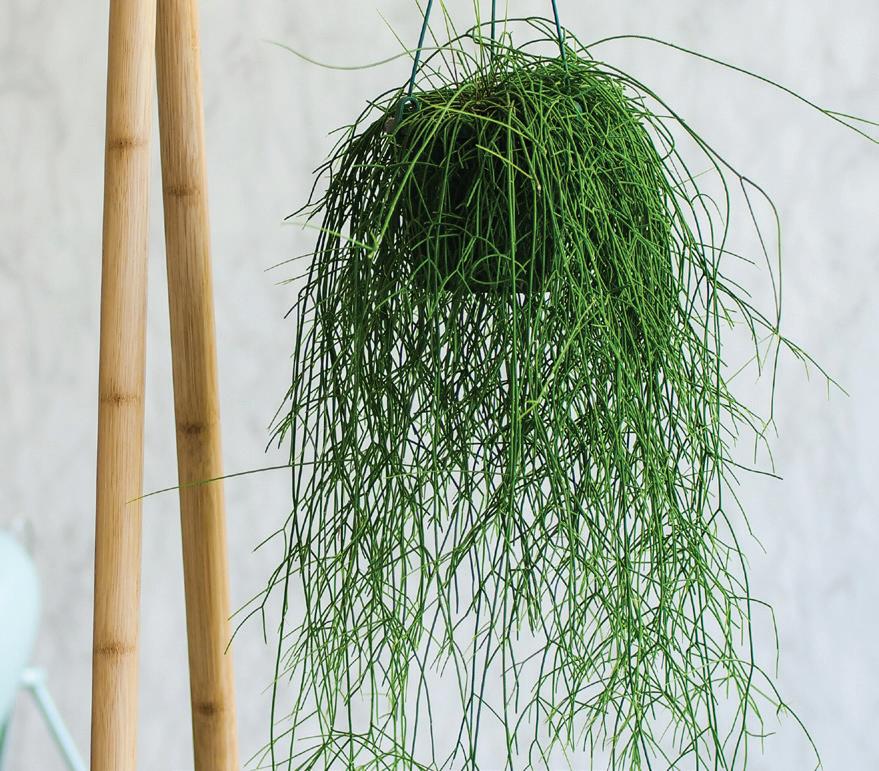
Maintaining a proper watering schedule is crucial to keep your indoor plants growing well. During winter, reduce watering to a third of what your plants get in summer, to avoid the risk of root rot from overwatering. However, ferns and carnivorous plants need a different routine, and require consistent watering year-round.
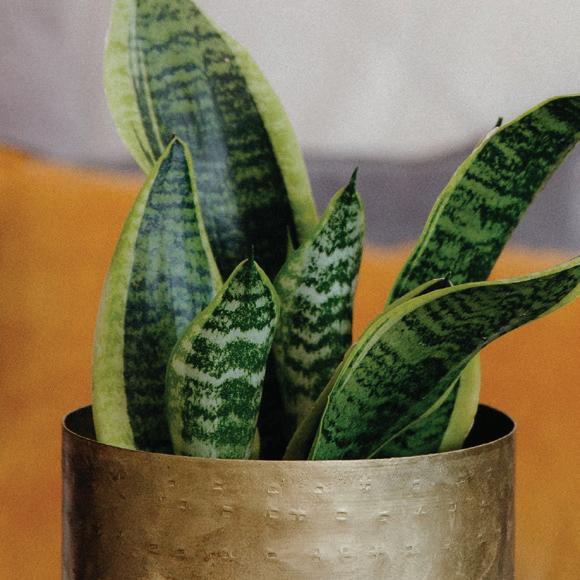
Not much floor space? No problem! Hang trailing plants like String of Pearls or the charming Chain of Hearts in kokedama or hanging pots to create a living artwork overhead.
Accessorise Thoughtfully
Let your pots pull double duty — choose ones that complement the room’s existing colours and textures. Mix materials like ceramics, woven baskets, and metallics for a look that’s styled but not too matchy-matchy.


The perfect way to warm up this winter is with a yummy bowl of Soup! Packed full of winter veggies topped with crunchy bacon bits for the perfect winter meal.
∙ 20g Butter
1 Leek
∙ 1 Onion
∙ 3 large Potatoes
∙ 5 Cups Chicken Stock
∙ 1/2 Cup Cream
∙ 200g Bacon
∙ Sour Cream, to serve
∙ Chopped fresh chives, to serve
∙ Toasted Turkish bread, to serve
Method
Roughly chop the Leek, Onion and Potatoes.
In a large saucepan over medium heat melt the butter. Add in the chopped vegetables. Cook for about 5 minutes until the vegetables begin to soften.
Add the chicken stock and cream to the saucepan. Bring the mixture to a boil, then reduce the heat and bring it down to a low simmer.
Simmer uncovered for about 25 minutes, stirring occasionally, until the vegetables are tender.
Remove from the heat and let it cool for 10 minutes. While cooling, cook up the diced bacon over a medium heat until it’s crispy.
Using a stick blender, carefully blend the soup until it reaches your desired consistency then stir in one third of the cooked bacon.
To serve, ladle the soup into bowls and top with a dollop of sour cream, a sprinkle of chopped
chives and the remaining bacon. Serve with toasted Turkish bread on the side.
Enjoy this hearty and creamy soup, perfect for warming up on a chilly day!

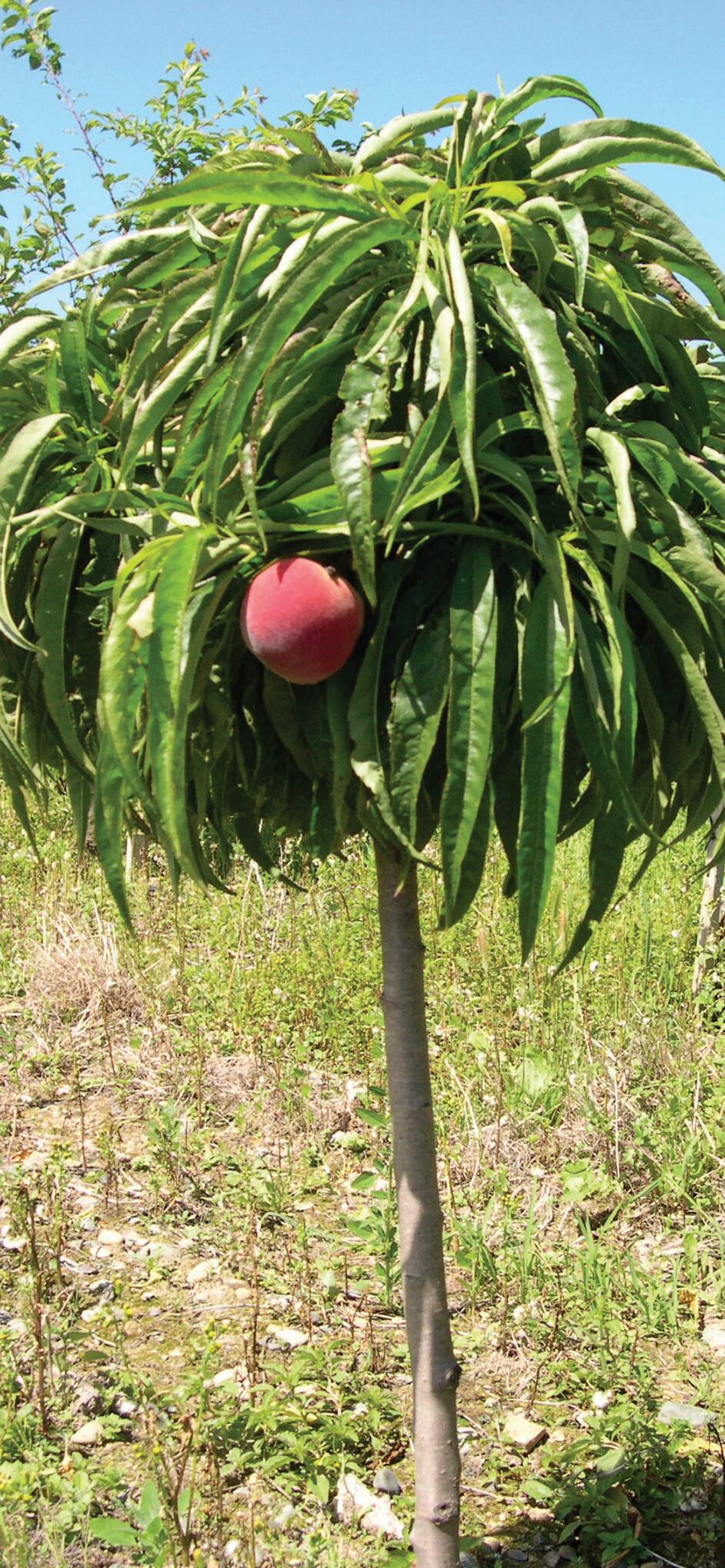
Perfect for small gardens
Highly productive

Very pretty pink spring blossom
Ideal fruit for lunchboxes

Juicy fruit with russetted skin
Grows up to 2.5m tall

Narrow trees for tight spaces
Very productive; full size fruit
Huge range of fruit trees available at your local Kings Plant Barn.


The world’s bee population is in trouble — and that’s a big deal for our planet. Bees are nature’s hardest workers, pollinating our food crops and keeping ecosystems buzzing. While New Zealand’s honey bees are doing okay, our native bees are declining — and they all need our help and support.
One of the biggest challenges bees face is habitat loss. With fewer flowers around, bees are struggling to find enough food. But the great news? It’s easy to make your garden a bee buffet!
Simply planting a few bee-friendly flowers or scattering a handful of Kings Seeds Beneficial Insect Blend can make a big difference. You’ll not only enjoy a garden bursting with blooms and buzzing life, but your fruit and veggie plants will thank you too!

Even in the cooler months, you can help our pollinating stay fed. Here are a few easy options to plant:


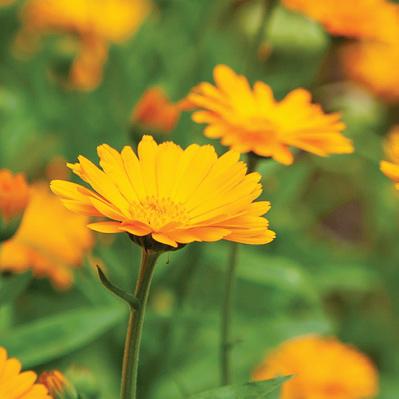

A little patch of flowers can mean a whole lot to a hungry bee. So plant a few, let them bloom, and enjoy the gentle hum of happy pollinators in your garden. Keep your flowers well fed with liquid Aquaticus Organic Garden Booster once every three to four weeks!
Did you know monarch butterflies can fly up to 5,000 km on their migration journey? That’s three times the length of New Zealand! Each autumn, these remarkable insects travel from Canada and the northern USA all the way to Mexico! Their journey doesn't end there, as temperatures rise, they head back up north to mate and start the next generation!
Here in New Zealand, we still don’t know enough about where our monarchs spend the winter. In the past, overwintering sites were observed around Auckland in places like Blockhouse Bay, Onehunga, and Orewa with hundreds of butterflies clustering in tall conifer trees. Sites have even been reported as far south as Oamaru. But over time, much of this local knowledge has been lost.
“Not only that,” says Jacqui Knight from the Moths and Butterflies of NZ Trust (MBNZT), “but their numbers each year are much less than previous years. We believe that this is because of the pest species of wasps, which harvest protein to feed juvenile wasps.”
To better understand monarch migration and overwintering in Aotearoa, MBNZT members have been tagging butterflies this past autumn. These small tags link back to the Trust’s website, helping to collect vital data on butterfly movements.


Gardeners across the country can play an important role. If you spot a tagged monarch visiting your garden on a warm winter day, you can report the sighting online. You can also help by planting nectar-rich flowers shrubs like hebes, bottlebrushes, and echinacea are all butterfly favourites.
“And we would encourage people to plant more swan plants in the spring, so that the returning female monarchs have places to lay their eggs,” she said. “Watching out for and destroying wasp nests is important as well.”
Kings Plant Barn proudly supports the cause, carrying the “Approved by Butterflies” mark from MBNZT — meaning all their swan plants are safe and caterpillar-friendly during the season.
Learn more about monarch butterflies and how to report sightings at nzbutterflies.co.nz











































• Smooth river stones
• Newspaper
• Pencil






• Paper
• Paint
• Paintbrushes (medium & finetipped)
• Water
• Sealer






Email a photo of your finished bird feeder to scoop@kings.co.nz before 1st September 2025 and go in the draw to win a $50 Little Growers prize pack!* 1 2 3 4










1. Choosing your stone! The smoother the stone, the easier it will be to paint your design, a stone between 5cm and 8cm will be the perfect size!



2. Rinse your stones under cool water and let them completely dry before painting them. Put down some Newspaper before using the paint for easy clean up! Once you’re ready to start, sketch your design on paper first so you can then work off it.









3. Using a pencil, draw your design onto the rock. Then start painting with your main block colour! When the block colour has completely dried, add details to your painting using a fine paintbrush.










4. Sealer will ensure that your stone creature stays bright and beautiful out in the elements! Wait until your finished painting is completely dry before adding a top layer of sealer around the stone.
Expert Tip: Use a hairdryer in between paint layers for faster dry times!





Get your garden sorted during Winter with FlexiBin, ideal for big and small landscaping projects.
Convenient size bins up to 2m3





When your FlexiBin is full, give us a call or book online, 3 easy steps to get your FlexiBin collected. for T&C’s and collection areas flexibin.co.nz
flexibin.co.nz
FlexiBin collected. for T&C’s and collection areas
When your FlexiBin is full, give us a call or book online, 3 easy steps to get your FlexiBin collected. for T&C’s and collection areas flexibin.co.nz
Pin me to the wall!
The cold weather has settled in, the days have gotten shorter and Winter is officially upon us. Despite the chill in the air, there is still plenty to do in the garden to keep it thriving this Winter season.

Flowers and Perennials
For colourful winter displays, plant hellebores under trees and shrubs.
Brighten up your garden with winter annuals like cineraria, pansies, viola, polyanthus, primula, asters, and hardy mini cyclamen.
Deadhead Hydrangeas, and any other flowering shrubs, perennials, or annuals with flowers that are past their best and clean up dead foliage. Remember to water cyclamen from the saucer if they are in small pots and cut back perennials that have finished flowering.
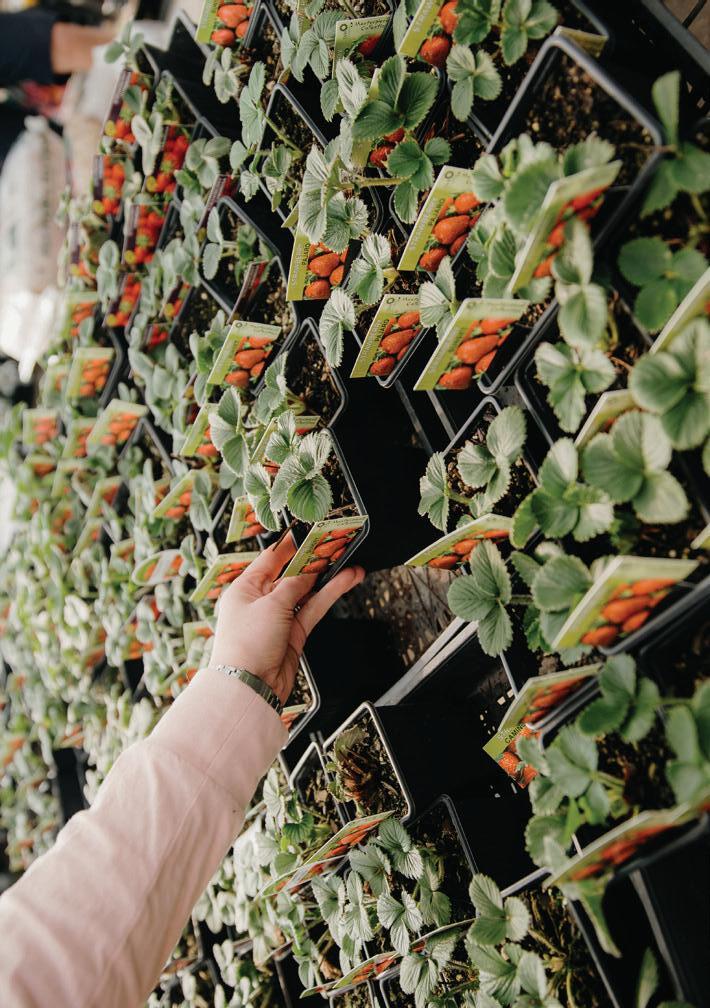
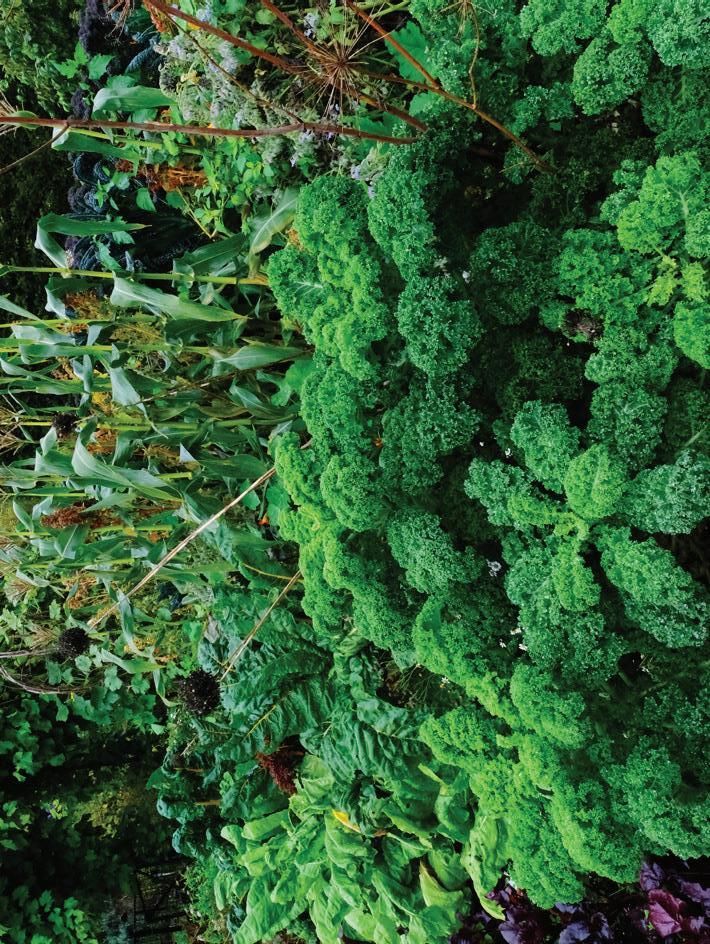
Fruit Peach, plum and nectarine trees are coming into stores in late June. Order specific varieties now instore.
Plant strawberries now to ensure they get settled and produce a bountiful crop come summer. Cover the soil with strawberry straw to protect the fruit from fungal diseases and to encourage growth. Prune back any new growth on established deciduous fruit trees, keeping them short, so that they are easy to harvest from. Make sure you prune on a dry, sunny day to reduce the risk of diseases. If you have had leaf curl in the past, gather up all fallen leaves and dispose of them in green-waste bins (not the compost) to lessen the chance of re-infection.
Veggies
It's time to get those seedlings in the ground! From lettuce and leek to broad beans and broccoli, give your garden a boost with these winter favourites.
Plant garlic and start chitting potatoes now, letting them sprout for a few weeks before planting.
Shield tender plants and seedlings from frost with frost cloth. Check often to make sure your veggie beds aren’t getting too wet as seedlings are at risk of collapsing from damping-off disease. Keep newly planted veggie beds weed-free and protect them from those pesky slugs and snails with Tui Quash.

Indoor Plants
Adjust your watering schedule for indoor plants, watering less and keeping an eye on soil moisture levels to prevent overwatering. Keep plants away from heaters and drafts to avoid dieback. Wipe dust off leaves and wash windows to help your indoor plants absorb more light.
Trees and Shrubs
Plant trees, shrubs, hedging, and hardy climbers now. Add a touch of fragrance to your garden with daphne, ideal for partially shaded areas. Ensure stakes and ties are secure to provide proper support for your trees and shrubs. Remove lichen from deciduous trees once they have shed their leaves by spraying with Yates Lime Sulfur.
General Tasks
Gather up healthy fallen leaves for next year’s leaf mould. Help break down existing clay pockets with ClayBreaker Gypsum. Sharpen and clean garden tools to help prevent the spread of diseases. Rejuvenate bare areas in your veggie patch by sowing green crop seeds to enrich the soil for spring planting.
Harvest veggies: silverbeet, spring onions, leeks, lettuce and parsnip. Harvest citrus: mandarins, oranges and lemons.
Lawns Remove any lingering leaves to prevent parts of the lawn from dying off. Fertilise your lawn and help get rid of moss with Yates Mosskiller & Fertiliser. Spot spray larger weeds in your lawn now with Weed Weapon Natural Power.
Gypsum ClayBreaker A great means to break up clay-based soil over time, helping plants thrive.
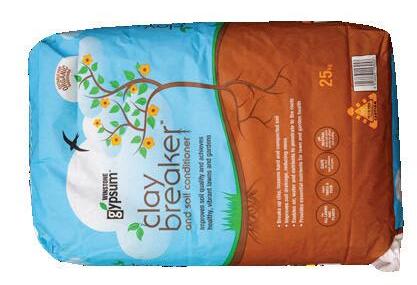
Yates Mosskiller & Fertiliser
Helps produce healthier grass while controlling moss in your lawn.
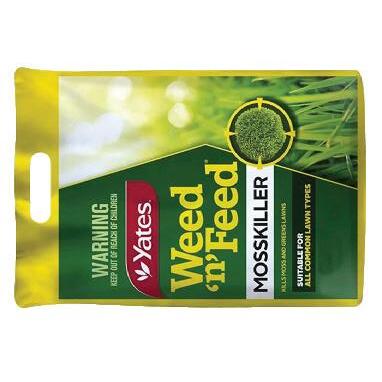
Yates Lime Sulfur A multi-purpose spray that controls a range of pests and diseases on deciduous fruit trees, roses and ornamentals.

Grow well with
Pin me to the wall!
Don’t let the gloomy get you down, we are a third of the way through winter already. Now is the perfect time to finish your winter garden clean up and start planning for Spring!
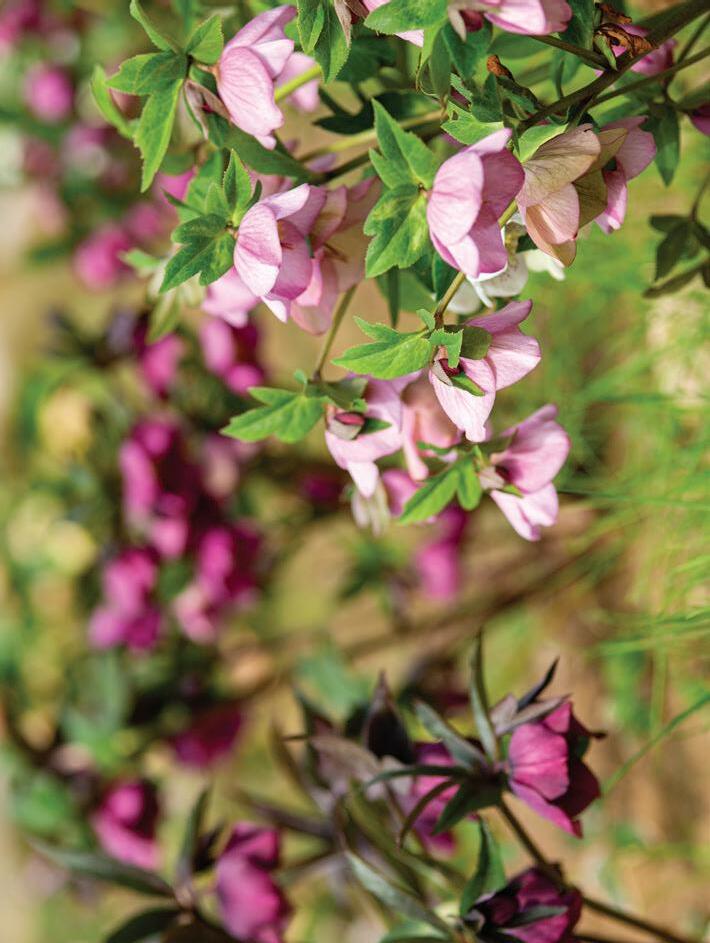
Flowers and Perennials
Plant hellebores to offer bees food in winter..
Continue to plant winter annuals in the garden and in pots and hanging baskets. Deadhead hydrangeas and any other flowering shrubs, perennials, or annuals that are starting to die back. Cut back perennial flowers that have finished flowering, and trim back trees and shrubs where necessary. Feed your winter annuals with Kings Dried Blood for optimal health.


Fruit
Continue planting strawberries for a tasty spring crop.
Remember to prune deciduous fruit trees that you didn’t prune in summer, as well as any citrus trees and grapevines that need a bit of work. You’ll need secateurs, Prune'n'Paste, as well as loppers and a pruning saw for any larger cuts. Prune back branches to help shape your fruit trees for the coming growing season. Do this on a fine day and use pruning paste afterwards. Start by pruning out any dead, damaged, or diseased wood. Then prune back by 1/3 to improve the shape. Spray your deciduous fruit trees with Yates Liquid Copper and EnSpray 99 to kill off overwintering insects and diseases.
Veggies
Plant out new season asparagus crowns, which will be arriving in store this month.
Chit potatoes for four weeks before planting. Store your seed potatoes in a cool, well-lit spot until they have 1-2cm shoots. Check the drainage around your veggie beds and continue to protect vegetables from frost and damping-off. Dig in any cover/green crops before they flower and be sure to get those slow-growing weeds out now in preparation for spring. Mulch garden beds with pea straw, continue using Tui Quash to protect against pesky slugs and snails .

Indoor Plants
Cut back any dead leaves. Yellow and curling leaves at this time of year can indicate cold damage, so increase the room temperature or move plants closer to an indirect light source.
General Tasks
If you have compost, remember to turn it over and add leaf matter, cardboard and newspaper. Layering is key!
Clean and sharpen garden tools for optimal performance. Clean out gutters once all deciduous leaves have fallen. Clean out birdbaths and bird feeders frequently. Harvest carrots, leeks, silverbeet, kale and lettuce.
Trees and Shrubs Plant daphnes in a semi-shaded area and feed with acidic food. Respray for waxy scale dead scale can still be attached to your plants. Spray lime sulphur to defoliate roses that are still in-leaf and to kill off any fungal spores. And then get ready to start pruning. It’s your last chance to prune roses in the first couple of weeks of July. After pruning, spray with a mix of liquid copper and Aquaticus Glow to help clear up any persistent bugs or fungal problems. Transplant any small trees or shrubs you want to move now.
Lawns Continue removing moss from your lawn with Yates Mosskiller & Fertiliser. Spot spray and take out any larger or harder-to-get weeds by hand now. Remove fallen flowers from your lawn and pop them in the compost. Adjust mower blade settings to avoid scalping wet lawns.
Glow
Aquaticus
Non-toxic spraying oil used to control a broad range of insects and prevent fungal diseases. Can be used indoors and outdoors.

Grosafe Prune'n'Paste
Ideal solution for sealing cuts and providing a protective natural barrier against fungal and bacterial diseases.

Tui Quash
Easy to apply slug and snail pellets which are safer to use around children, pets and wildlife than most other baits.

Grow well with
Pin me to the wall!
In August, temperatures begin their slow creep upwards and spring is on the horizon — time to get any remaining winter jobs done, and start planning and preparing for your Spring garden!

Flowers and Perennials
Start planting summer bulbs now. For repeat flowering, deadhead old blooms as they fade. Early spring bulbs will now be flowering cut and gift to a friend or family member!
Continue to feed with Kings Dried Blood and Kings Blood & Bone.
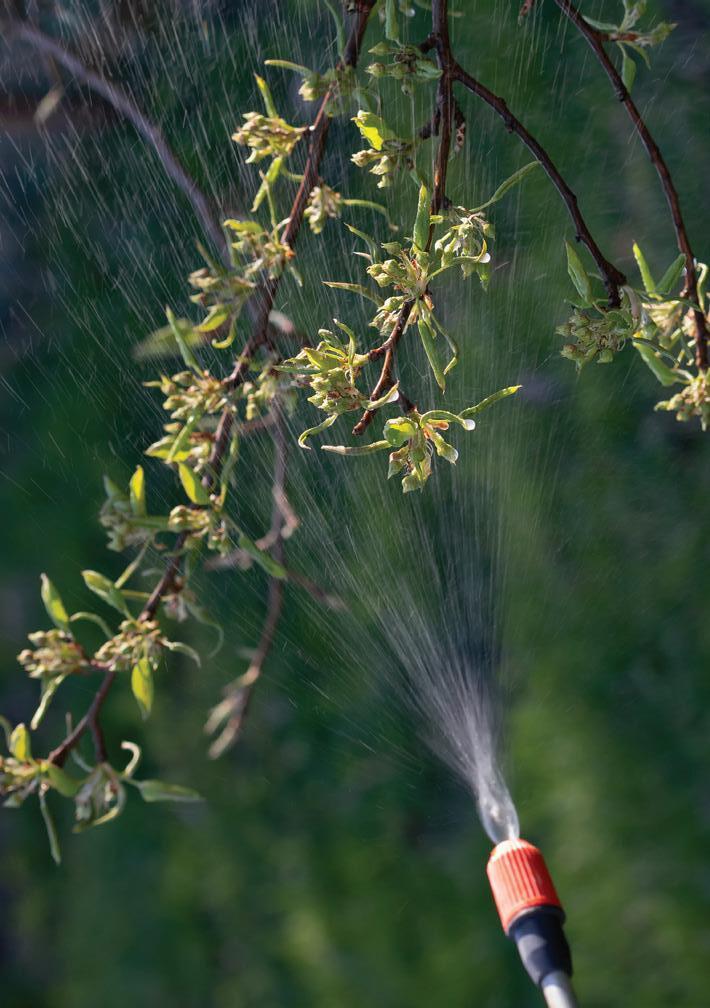

Fruit
Purchase your deciduous fruit trees now and enjoy fresh fruit straight from your own backyard. Protect your fruit trees from fungal diseases with a spray of Grosafe FreeFlo Copper before bud-burst. If you're planning to graft or espalier fruit trees, aim for late-August to mid-September for optimal results. Thoroughly spray with a mix of FreeFlo Copper and Aquaticus Glow before they burst into life. By winter spraying with these two organic products you reduce the risk of diseases and pest problems over the coming seasons. If you are going to graft or espalier fruit trees, do this in late August to mid-September.
Veggies
Sow spring seed now, including peas, beans, lettuce, celery, broccoli and cauliflower.
Plant potatoes now to enjoy a bountiful harvest later in the year. Grow tomatoes and chilli from seed inside before transplanting them outside in September.
While it's too early for basil outdoors, plant parsley, coriander, thyme, and mint to add fresh herbs to your dishes. Dig in compost crops and start weeding beds to ensure you’re ready and prepared to plant this spring. Start feeding your veggies regularly from midAugust.

Indoor Plants
The end of August means it’s time to start repotting. Use Kings House Plant Mix to keep your indoor plants growing well. Turn plants if they have been stretching towards the light. Start fertilising with Kings Liquid House Plant Food.
General Tasks
If space allows, consider making your own compost bin to recycle organic waste into nutrient-rich soil. Weeds will soon be popping up everywhere get rid of them while they are small, before they get out of hand.
Cut down green crops in early August and dig them into garden beds to enrich the soil for spring planting.
Trees and Shrubs
Magnolias and flowering cherries are in stores this month plant them early to enjoy their beautiful blooms this spring. Mulch around trees with Living Earth More Than Mulch. Feed the whole garden with Kings Garden Booster. Put up wasp traps as queens begin to come out of hibernation. Mulch roses generously and apply a final spray of Grosafe FreeFlo Copper before bud-burst for disease prevention. Remove fallen camellia flowers to avoid slipping hazards and add them to your compost.
Time to trim and shape early flowering camellias, wait till blooming is finished and then trim.
Lawns As it warms up you can begin to repair your lawn or plant up any new patches. Or if moss has become a problem apply Yates Mosskiller & Fertiliser, just be careful around paving as it can stain it.
Living Earth More Than Mulch Contains bark which creates a barrier between the sun and earth, keeping plants hydrated for longer.

Kings Blood & Bone Organic plant food rich in Nitrogen and Phosphorus. Promotes growth, and root development. Safe to use for all plants.

Grosafe FreeFlo Copper A copper-based fungicide that is an all-round solution for fungus control in fruit, vegetables, and ornamentals.
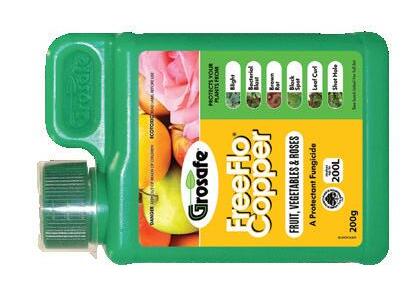
Grow well with
Earn points so you can buy more plants $1 = 1 point, earn 300 points and score yourself a $10 voucher!
Be the first to know Early alerts for sales, new arrivals and the latest plant news and tips.
Score yourself a birthday freebie! Get a $10 voucher on your birthday to spend instore or online.
Exclusive specials & events just for you Personalised offers plus weekly member only deals & event invites.
Wednesdays are wonderful if you're 65+ 10% off plants every Wednesday for SuperGold card holders.
Signing up is easy!
Ask instore at checkout or go to kings.co.nz
Helping you grow well